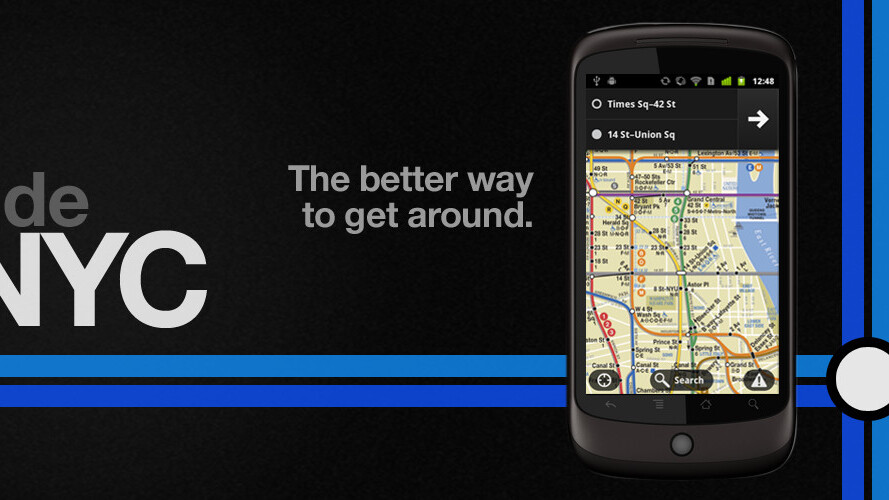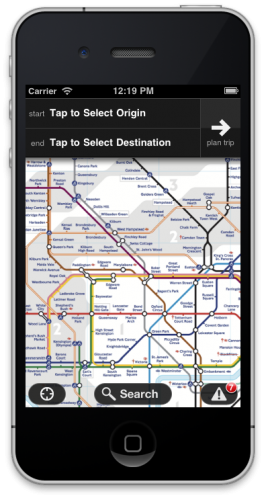
Transit-planning app Pandav is closing in on 1 million completed sessions for the month of August, this is according to co-founders Tom Hauburger and David Hodge. As a mobile app, Pandav ventures where few other transportation tools dare to tread, letting users navigate public transit data on a map instead of scrolling through destinations, or inputting them manually. It’s also one of the best-looking transit apps we’ve seen.
Pandav has a clean, confidence-inspiring interface, and it’s fast. Simply tap your nearest transit station on the map, or the station nearest to your point of origin, and then tap your destination. Pandav will give you train arrival times, as well as trip duration. Below you can see a video with this feature for the New York City Subway, currently the only live version, but more are due up soon.
Pandav sits at an interesting crossroads of location services like Foursquare, and transit apps such as HopStop or Google Maps. However, where Pandav is different is that it knows where you’re going, as opposed to where you check in. It’s predictive, and helps you optimize your trip based on your current location, and where you say you would like to go.
Pandav also hopes to upend route planning tools that deliver a “good enough” experience based on data, but stop there. A simple example of this is recommending that riders take an express train when they’re in New York, instead of riding the local. Both will get you there, but one is a much better transit experience than the other.
Pandav also functions without needing to be connected to the Internet. When a version of a city transit planner is installed, it comes pre-loaded with trip times, and schedules, and can use them as a fall-back when there is no available data connection. The Washington D.C. transit app also has the ability to do real-time tracking of trains, because this is information made public by the WMTA
What makes Pandav so likely to be a winner is that it is used during the most monetizable part of a person’s day. This means that advertisers are dealing with a potential customer at a time when he or she is likely to make a purchase. Include the right offer, or a compelling discount, and you’ve got a sale.
“Most of the time, people are either at work or at home,” says Hauburger. “There’s a small window of time when folks are commuting, or exploring the city. We can help build a richer experience based on knowing when and where people are going, and we can build an interesting business around directing people to certain places.” However, even if offers go live, they will be included as a feature which can easily be turned on or off by those who want it.

Pandav is not currently focused on adding offers to its service, but could do so later. In particular there are two groups of transit riders to whom this might appeal; daily commuters and explorers. For commuters there could be the opportunity to redeem a coupon for a discounted cup of coffee at the cafe near their office. For city explorers, and those new to town, such as tourists, Pandav could make recommendations, similar to the ones from friends on Foursquare that pop up after you’ve checked in somewhere. Also, because Pandav may be used to plan a morning or evening commute, the context of when a trip is being made can add relevance to any offers.
Pandav is close to launching a version of its mobile app for London-based commuters and is looking for a few beta testers who are willing to give feedback. Space is limited, but if you’re interested, send an email to LondonBeta@pandav.us and tell them you’re a reader of The Next Web.
Get the TNW newsletter
Get the most important tech news in your inbox each week.




